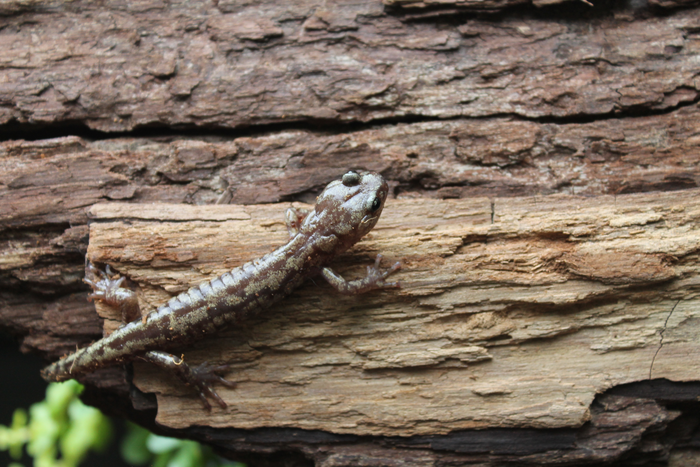Wandering Salamanders Skydive From Some of the World's Tallest Trees
The amphibians stretch their limbs and tails to glide in a smooth style
Elizabeth Gamillo
Daily Correspondent
May 24, 2022 2:09 p.m.

The skydiving wandering salamanders are native to northwestern California. Christian Brown
When disturbed, wandering salamanders (Aneides vagrans) living in the canopies of redwood trees will take a leap of faith to branches further below. The acrobatic stunt is not a frantic and uncontrolled plunge. Instead, it is a controlled descent. The animals stretch out their tails and feet in a position resembling a skydiver, reports Jake Buehler for Science News. Details on the gliding behavior were published this week in Current Biology.
The tan and mottled salamanders are native to northwestern California and inhabit mats and ferns suspended 280 feet up in the canopies of redwoods. These amphibians spend most of their lives in the trees, and the skydiving may allow them to leap away from predators or find areas in the redwood trees with more food and mates. But how the salamanders could jump from such heights was not fully understood. The amphibians do not have membranes or skin flaps as seen in other gliding lizards, frogs or mammals, reports Kate Baggaley for Popular Science.
“The salamander is surprising because it doesn’t look like it should be able to do anything in the air whatsoever,” Jake Socha, a biomechanist at Virginia Tech who studies flying snakes, not involved with the study, tells Popular Science. “It seems to be that numerous animals have evolutionarily stumbled upon similar sets of features which involve behaviors that will help them to control their body in the air.”
The behavior was first noticed by Christian Brown, an integrative biologist at the California State Polytechnic University, Humboldt, while he studied the amphibians as a graduate student. Now at the University of South Florida, Brown and his colleagues wanted to know if the amphibian’s tree-dwelling ways and tendency to leap were related, and if the small critters could control their fall, per Science News.
More:
https://www.smithsonianmag.com/smart-news/wandering-salamanders-use-their-tails-and-feet-to-leap-from-trees-180980135/
